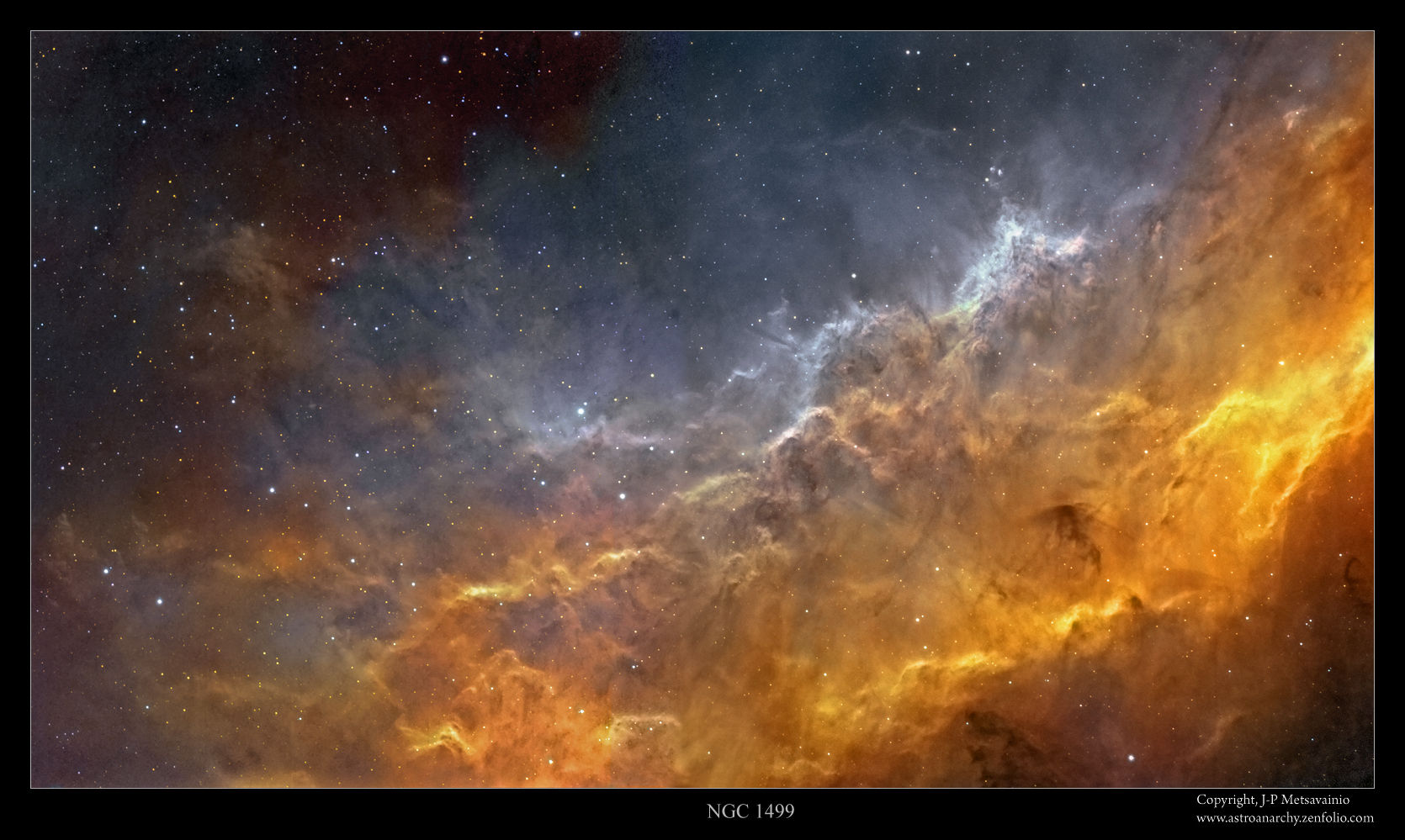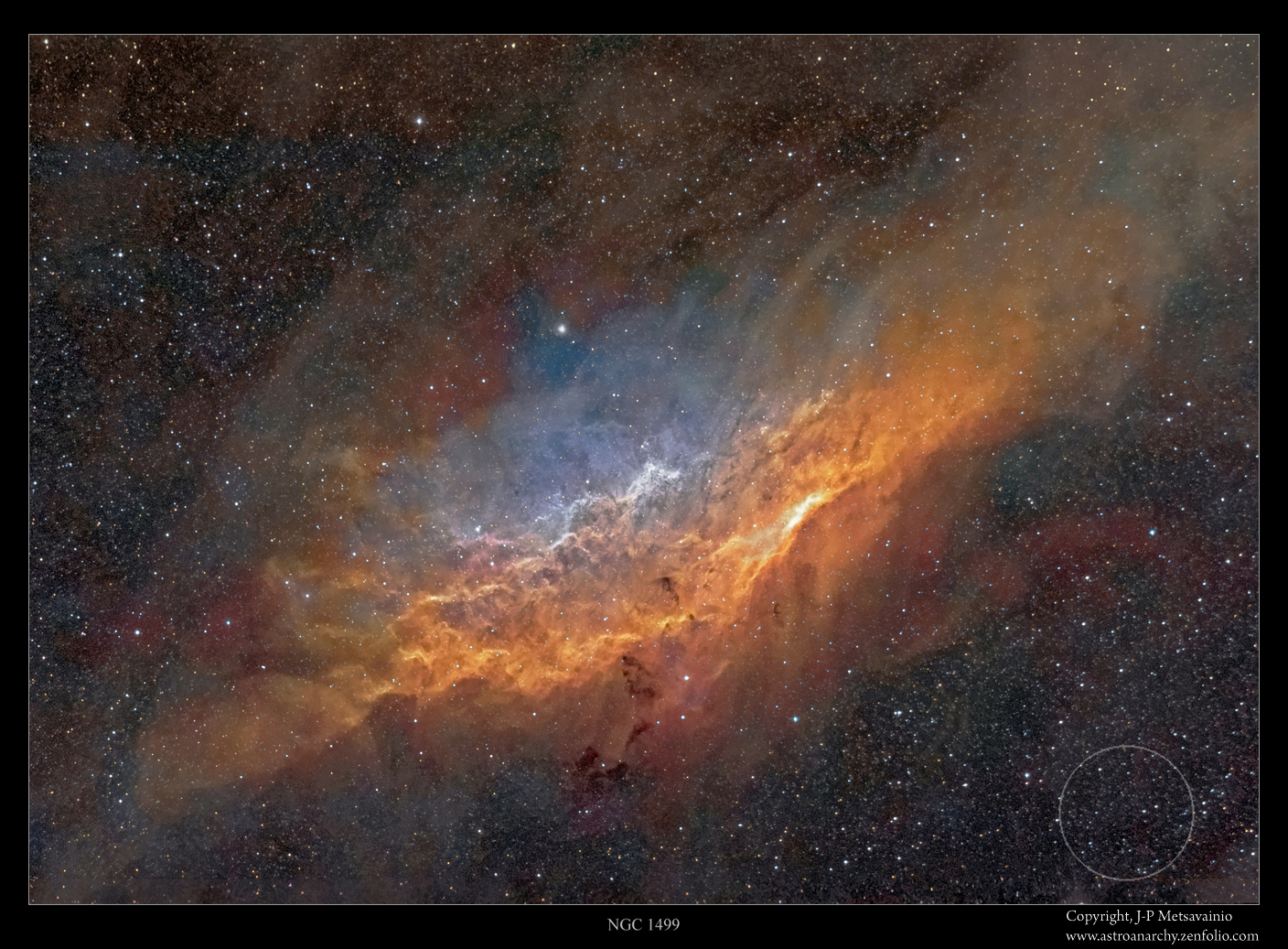COPYRIGHT, PLEASE NOTE
All the material on this website is copyrighted to J-P Metsavainio, if not otherwise stated. Any content on this website may not be reproduced without the author’s permission.
Have a visit in my portfolio
PORTFOLIO:https://astroanarchy.zenfolio.com/
Wednesday, February 17, 2016
Cinemascope format panoramas from my astro photos
I have worked with a cinemascope format movie for a movie theatre presentations from my photos. This is an extra wide ~21:9 format used in theaters. The actual film is not ready yet but I have some of my images converted to this ultra wide format. I think they will look great at a large movie screen! I'll publish some of panoramic format photos here, images are downscaled for the web.
Flying Dragon nebula, Sh2-114
Please, be sure to click for a full resolution, ~2600 x 1200 pixels
Half a Moon
Please, be sure to click for a full resolution, ~2600 x 1200 pixels
Image details can be seen HERE
Labels:
moon images,
Narrowband color images
Tuesday, February 16, 2016
Cinemascope format panoramas from my astro photos
I'm publishing some experimental material since the weather up here has been cloudy for months.
I have working with a cinemascope format movie for a movie theatre from my photos. This is an extra wide ~21:9 format used in movie theaters. The actual film is not ready yet but I have some of my images converted to this ultra wide format. I think they will look great at a large movie screen! I'll publish some of panoramic format photos here, images are downscaled for the web.
NGC 281
Please, be sure to click for a full resolution, ~2600 x 1200 pixels
Ngc 281, the Pac-Man Nebula. Image details can be seen HERE
Nebulae of the constellation Auriga
Please, be sure to click for a full resolution, ~2600 x 1200 pixels
A large 12-panel mosaic of the constellation Auriga. Image details can be seen HERE
Labels:
Narrowband color images,
nebula
Friday, February 12, 2016
NGC 1499, the California Nebula, project continues
It has been very cloudy up here for about several months now. At January 4. I was able to shoot some lights for the NGC 1499, the California Nebula. We had few hours of clear sky at February 1. I shot three hours of H-alpha light next to previous image to build a two frame mosaic. Colors are partly from an older wide field photo of the california Nebula.
Detail of the NGC 1499 as a two frame mosaic
Please, click for a large image
An older wide field photo of the NGC 1499
Please, click for a large image
A wide field image of the NGC 1499 from January 2012 was shot with a Tokina AT-X 200mm f2.8 lens, QHY9 astrocamera and Baader narrowband filter set. The white circle at lower right corner shows an apparent size of the full Moon at the same scale. (Moon has an apparent diameter of 0.5 degrees = 30 arc minutes.) This is a large target with a lowish surface brightness, total exposure time is around 30h.
INFO
The California Nebula is an emission area located in constellation Perseus. It appears to resemble outlines of State of California on long exposure photographs, like this one. It has a very low surface brightness and it's very difficult to observe visually. Distance from my hometown Oulu, Finland, is about 1000 light years.
this image spans around five degrees horizontally. The Wikipedia article states, that the angular size is about 2,5 degrees (Five full Moons side by side) but as can be seen in this image, the actual size, with a dim outer parts, is much large.
Detail of the NGC 1499Please, click for a large image
The left side of the two frame mosaic at top of the page was shot at At January 4. 2016.
Technical details
Processing work flow
Image acquisition, MaxiDL v5.07.
Stacked and calibrated in CCDStack2.
Deconvolution with a CCDStack2 Positive Constraint, 21 iterations, added at 25% weight
Color combine in PS CS3
Levels and curves in PS CS3.
Imaging optics
Celestron Edge HD 1100 @ f7 with 0,7 focal reducer for Edge HD 1100 telescope
Mount
10-micron 1000
Cameras and filters
Imaging camera Apogee Alta U16 and Apogee seven slot filter wheel
Guider camera, Lodestar x2 and SXV-AOL
Astrodon filter, 5nm H-alpha
Astrodon filter, 3nm O-III
Astrodon filter, 3nm S-II
Exposure times
H-alpha, 24 x 1200s =8h
O-III, 3 x 1200s binned = 1h
S-II, 3 x 1200s binned = 1h
Total 10h
Part of the S-II and O-III signals are borrowed from the older wide field photo.
Labels:
Narrowband color images,
nebula
Tuesday, January 26, 2016
Filaments of Cygnus in visual spectrum
This is a visual color version of my first picture for the year 2016. I published the Mapped Color version at January 7. This is a two frame mosaic project of the central Cygnus. It was shot at freezing temperature of - 27 degrees centigrade (-17 fahrenheit). Exposures are from three nights between 3. - 6. january 2016. Total exposure time 15h.
Filaments of Cygnus
click for a full size image
Natural color composition from the emission of ionized elements, R=80%Hydrogen+20%Sulfur, G=100%Oxygen and B=85%Oxygen+15%Hydrogen to compensate otherwise missing H-beta emission. This composition is very close to a visual spectrum.
Orientation in Cygnus
Area of interest is marked as a white regtangle in this older wide field image of the area.
More info about this photo can be found HERE.
Technical details
Processing work flow
Image acquisition, MaxiDL v5.07.
Stacked and calibrated in CCDStack2.
Deconvolution with a CCDStack2 Positive Constraint, 21 iterations, added at 25% weight
Color combine in PS CS3
Levels and curves in PS CS3.
Imaging optics
Celestron Edge HD 1100 @ f7 with 0,7 focal reducer for Edge HD 1100 telescope
Mount
10-micron 1000
Cameras and filters
Imaging camera Apogee Alta U16 and Apogee seven slot filter wheel
Guider camera, Lodestar x2 and SXV-AOL
Labels:
Narrowband color images,
nebula
Subscribe to:
Posts (Atom)


















